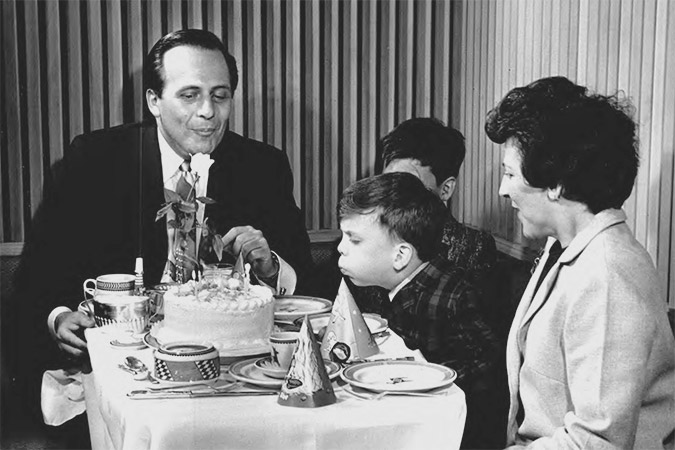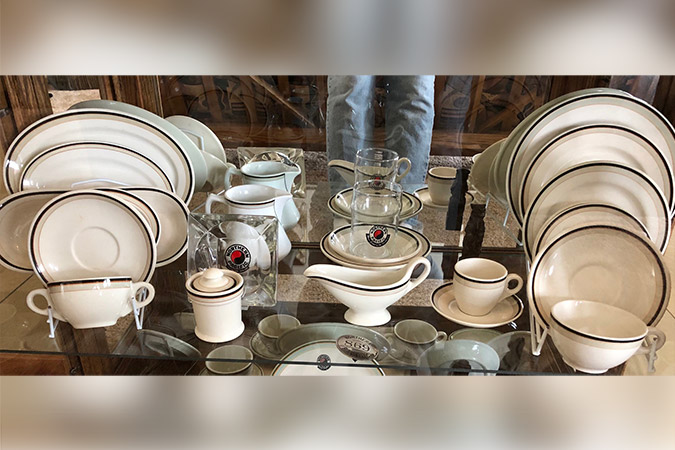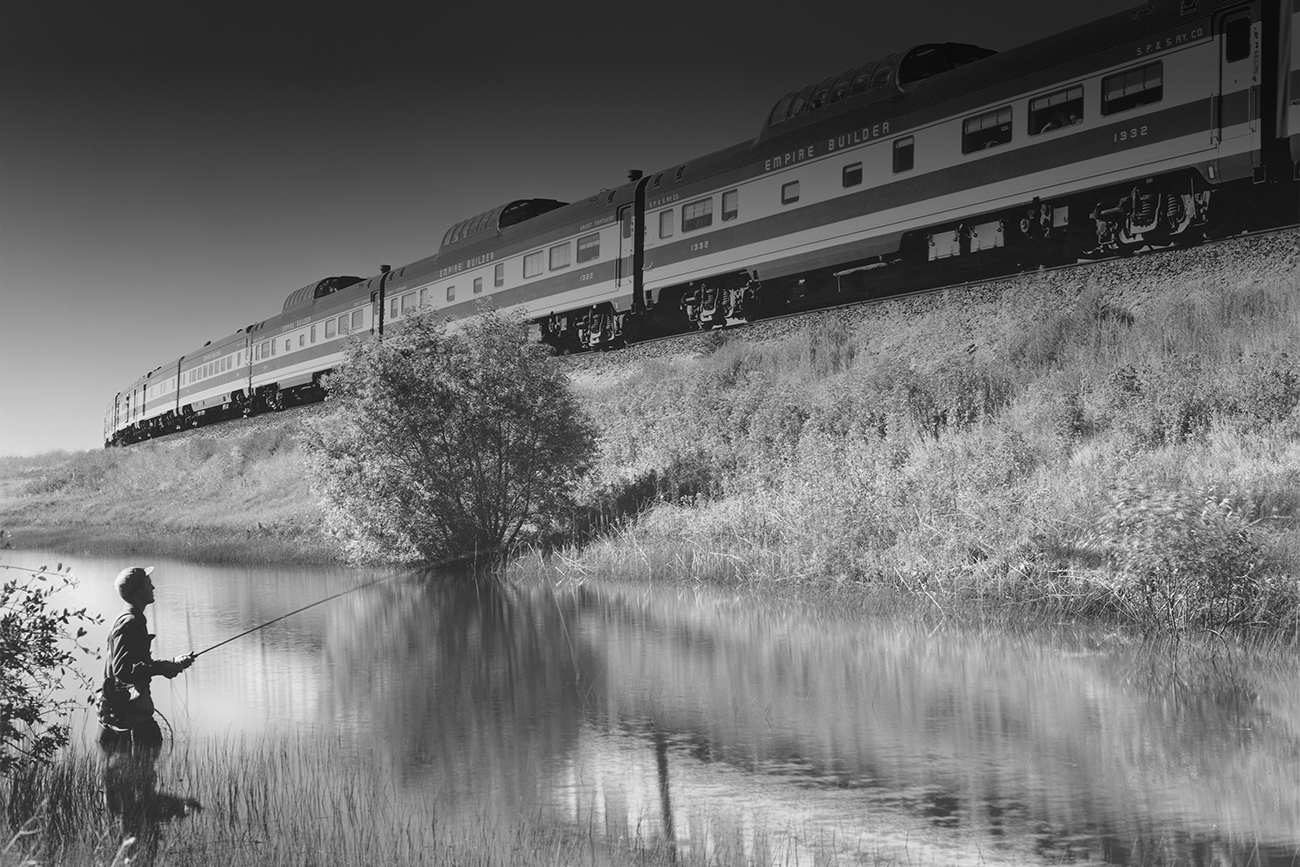Recipes on the Rail: This Valentine’s Day, try this French toast cook-off for you and your butter half

BNSF’s predecessors and their passenger rail dining services each had their own set of signature menus and dishes, depending on their geographical routes. Our series, Recipes on the Rail, will take you back to the days of dining car service and provide you with some delicious recipes for your enjoyment.
When you’re traveling cross-country, your meals may be something you grab from the fast food drive-thru or one of the prepackaged meal containers served on a flight. Things have changed a lot since the heyday of passenger rail, when meals were served on classy ceramic plates with designs often inspired by the culture and art of the region where the railroad operated.
These plates, known as railroad china or railroad dinnerware, came in two versions – stock prints and custom designs. Stock prints were stamped with the company's logo and could be purchased by any railroad, while custom designs were proprietary and protected from sale to other railroads.

Many of our predecessors had proprietary china patterns that were used on their flagship services like the Atchison, Topeka and Santa Fe (Santa Fe)'s Super Chief and the Northern Pacific (NP)’s North Coast Limited.
Patterns varied, of course, between railroads and could range from simple patterns to more intricate designs depending on the era and preference of the railroad. For example, NP’s “Northwest” China, which was inspired by the Art Deco era of the 1930s, was simple and featured an off-white base with thick black and mint green bands complemented by thinner red and gold stripes.

“The idea was to give passengers a luxurious experience and a sense of place in that region,” said Bradley Houston of C2 Art Advisors, the firm that manages BNSF’s art collections. “It was a very thoughtful decision about how to treat their customers.”
On the other hand, the china pattern used on the Super Chief was quite complex. Known as the “Mimbreño” pattern, the designs took inspiration from pottery created by the Mimbres people, a Native American tribe that lived throughout southeastern Arizona and southwestern New Mexico near where the line operated. The pottery featured red-on-white or black-on-white designs with complex zigzags, triangular patterns and geometric depictions of humans and animals.

Mary Colter, an architect for Santa Fe depots and Harvey Houses who also served the railroad as its chief expert on Native American art, took inspiration from the historic pottery and created the plates, bowls and cups that were used on the Super Chief from 1936 through the 1970s.
Through the era of passenger rail service, dining cars saw multiple iterations of china patterns from different railroads. Generally, each piece of china was tied to a specific menu item and collections would grow as the dining services evolved to accommodate new dishes. In some cases, one collection of china might contain 35 different shapes in just one pattern. Today, railroad china is a collector’s item that is sought out by those looking to preserve the history of the railroad dining experience.
If you’re looking for a way to celebrate Valentine’s Day at home this year, we encourage you to challenge your loved ones to a brunch cook-off featuring two French toast recipes served on our predecessor lines, Santa Fe and Northern Pacific. See which one you like better! All recipes were adapted from Dining by Rail by James D. Porterfield.
Toasting Bread (Northern Pacific)
- 2 packages active dry yeast
- 3 tbsp. sugar
- 3/4 cup warm water
- 1 1/2 cup warm milk
- 1 tbsp. salt
- 1 tbsp. dry malt
- 2 tbsp. shortening
- 5-5 1/2 cups all-purpose flour
Grease two 8" by 4" bread pans. In a large bowl, combine yeast with sugar and warm water and let stand for eight to 10 minutes. Add milk, salt, dry malt and shortening. Mix at low speed until blended. Add three cups flour and beat thoroughly. Using a wooden spoon, gradually stir in enough of the remaining flour to make a moderately stiff dough. On floured surface, knead dough until smooth and elastic. Place in greased bowl, turning to grease top. Cover and let rise until doubled, about 40 minutes. Punch down dough, divide in half and let rest for 10 minutes. Form loaves and place the greased bread pans. Let rise again until doubled, about 35 minutes. Bake for 40 minutes.

Northern Pacific French Toast
- 2 slices of bread
- 2 eggs, slightly beaten
- 1/2 cup milk
- 1 tbsp. sugar
- 1/4 tsp. salt
- 1/4 tsp. cinnamon
- Butter or shortening to fry
Cut bread into 1 1/2-inch slices and cut slices in half diagonally. Mix eggs, milk, sugar, salt and cinnamon well in a shallow dish. Fry in a little butter or shortening until golden brown on both sides. Serve hot with your choice of toppings.
French Toast à la Santa Fe
- 2 slices of white bread, cut 3/4 inch thick
- 1/2 cup light cream
- 2 eggs
- pinch of salt (optional)
- 1/2 cup cooking oil
Preheat oven to 400 degrees. Place cooking oil in skillet and heat to hot. Meanwhile, cut each slice of bread diagonally to form four triangles and set aside. In a small bowl, combine eggs, cream and salt and beat well. Soak bread thoroughly in egg and cream mixture. Fry soaked bread in hot oil to a golden brown on both sides, about two minutes per side. Lift from skillet to clean paper towel and allow to absorb excess cooking oil. Transfer to baking sheet and place in oven. Bake four to six minutes, until bread slices have puffed up. Serve sprinkled with powdered sugar and cinnamon and applesauce, currant jelly, maple syrup, honey or preserves and bacon, ham or sausage if desired.


